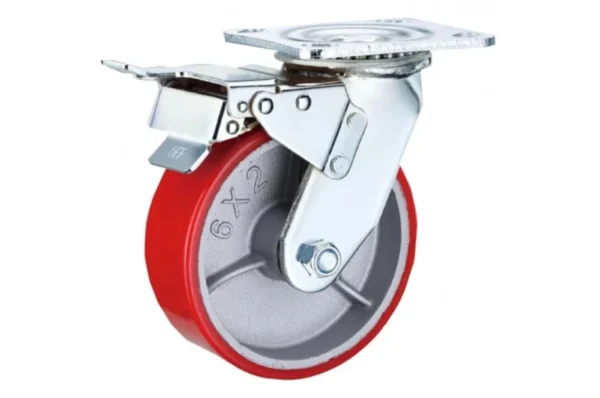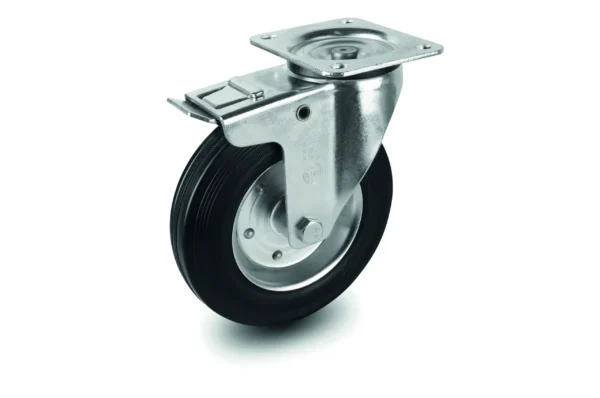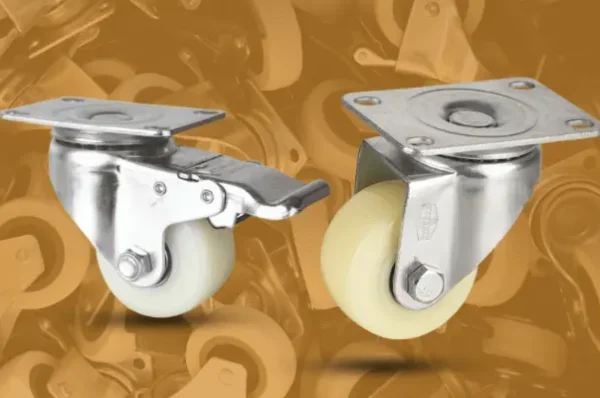Heavy-duty casters are required in industries where mobility, durability, and safety are paramount. Choosing the proper caster is even more critical in extreme circumstances, including high temperatures, cold conditions, and corrosive surroundings. These complex settings necessitate casters with particular designs and materials that can survive extreme environments while maintaining performance.
This guide will examine the essential variables when selecting heavy-duty caster wheels for extreme settings. We emphasize how they improve productivity and safety in challenging situations.
Understanding Extreme Environments
Before you begin the selection process, identify what constitutes an “extreme environment.” These conditions may include:
High Temperatures: Casters in foundries and industrial ovens are exposed to high temperatures. This requires heat-resistant materials like forged steel or specialized polymers.
Low Temperatures: Freezers, cold storage, and winter regions necessitate rubber wheel casters built for freezing temperatures.
Corrosive Conditions: Chemical facilities, coastal conditions, and regions with high moisture levels can all degrade typical materials. For corrosion resistance, stainless steel or polyurethane casters are necessary.
Rough Terrains: Tough, operated wheels are required for stability and damage prevention on gravel or debris-heavy grounds.
Each setting places different demands on heavy-duty casters, so it is critical to select the correct design, material, and features.

Essential Factors When Choosing Heavy Duty Casters
1. Material Selection
The caster’s material is one of the most critical components in harsh situations. Different materials provide specific advantages:
Steel Casters: Steel casters are ideal for high-temperature and rough terrains since they provide outstanding strength and wear resistance. Steel casters in the UAE are a solution for areas where extreme heat and large loads are expected.
Rubber wheel casters are suitable for cold areas and rough surfaces. They act as shock absorbers and protect the flooring.
Polyurethane Casters: Polyurethane is ideal for corrosive situations since it is resistant to chemical exposure and can withstand damp circumstances.
2. Load Capacity
Extreme conditions frequently require enormous loads, and the caster must be able to take the weight without sacrificing mobility or safety. To accommodate dynamic forces, use casters with a load capacity exceeding your maximum needs.
3. Temperature Resistance
Casters made from heat-resistant materials such as forged steel or high-temperature polymers are essential in high-temperature situations. On the other hand, rubber materials provide flexibility in low-temperature environments.
4. Corrosion Resistance
For durability in corrosive situations, use stainless steel casters. Casters with corrosion-resistant coatings, such as zinc plating, work well, too. Polyurethane wheels are highly chemical resistant. Always choose materials that can tolerate harsh environments for improved performance and lifespan.
5. Wheel Design
The design of the wheel has a considerable impact on performance:
- Treaded Wheels: Provide better traction on rough or uneven surfaces.
- Flat Wheels: Ideal for smooth surfaces and heavy loads.
- Swivel Casters: Allow more excellent maneuverability in tight spaces.
- Fixed Casters: Provide stability and straightforward movement.
6. Braking Mechanisms
Braking mechanisms are critical for safety in severe environments. Use casters with robust brakes for incline and exact positioning. In demanding situations, reliable brakes help prevent accidents and improve stability. When choosing casters for severe conditions, always put safety features first.
Applications of Heavy Duty Casters in Extreme Environments
Industrial Plants and Foundries
High-temperature steel casters help transport large machines in hot environments. They function effectively in foundries and industrial facilities. These casters withstand heat and provide smooth operation. Their resilience makes them suitable for transporting commodities in harsh environments.
Cold Storage and Freezing Facilities
Rubber wheel casters work well on ice or chilly conditions. They provide smooth mobility without cracking. Their material resists stiffening, allowing it to remain flexible even when frozen. These casters are perfect for cold storage and winter conditions. Their resilience improves efficiency and safety in harsh, low-temperature environments.
Chemical and Marine Environments
Polyurethane casters and stainless steel components are chemical, salty, and moisture-resistant. These characteristics make them suitable for usage in challenging situations such as marine ports or chemical facilities. They ensure endurance and long-term performance in corrosive environments.
Outdoor Construction Sites
Steel casters with durable rides offer exceptional stability. They work well on rugged terrain and can handle debris and uneven surfaces. Their design provides longevity in harsh environments.
Tips for Maintenance and Longevity
Regular maintenance is essential for ensuring the longevity and performance of heavy-duty casters. Keeping them in good condition improves efficiency, safety, and reliability. To properly maintain your casters, follow these thorough tips:
Inspect Regularly
Perform routine inspections to look for evidence of wear and tear, corrosion, or damage to the caster wheel material. Check for cracks, deformations, excessive wheels, and mounting hardware wear. Early detection of problems can help to avoid significant damage or equipment failure.
Lubricate Moving Parts
Casters frequently involve moving parts such as axles, bearings, and swivel casters in UAE. Grease these parts regularly to keep them running smoothly. For casters in harsh environments, use heat-resistant grease in high-temperature settings or low-temperature grease in freezing temperatures. This ensures peak performance while minimizing friction-related wear.
Clean Thoroughly
Debris, dirt, and chemical residues can build up on casters, deteriorating materials and reducing performance. Clean the wheels and other components regularly using approved cleaning solutions. Thoroughly clean casters that have been exposed to corrosive substances to avoid long-term damage.
Replace When Necessary
Even with proper maintenance, heavy-duty caster wheels will eventually wear out. Replace damaged or severely worn casters as soon as possible to eliminate safety hazards, inefficiencies, or damage to floors and equipment. Keeping spare casters on hand might help reduce downtime.
These maintenance measures will help your heavy-duty casters last longer, perform better, and keep your workplace safe and efficient. Proper care lowers long-term expenditures and guarantees consistent mobility for your operations.
Summary
Selecting suitable heavy-duty casters ensures safety, efficiency, and longevity in extreme environments. Proper material selection, load capacity, and regular maintenance allow you to maximize performance across diverse applications such as industrial plants, freezing facilities, and rough terrains. Prioritizing factors like temperature resistance, corrosion protection, and braking mechanisms ensures durable solutions. For high-quality, heavy-duty casters designed to meet these demanding needs. Browse the extensive range available at Go Casters, your trusted partner for mobility solutions.




